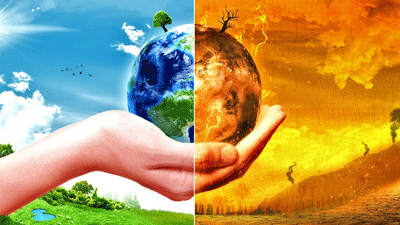Climate Change – The Upper Limit

Throughout human history, people have had an effect on the environment. We created airplanes that pierced the skies, monuments and architecture that lasted for centuries, and light that illuminated the atmosphere. However, none of our past actions will have nearly as large of an effect on Earth compared to how we have affected the Earth’s temperature.
With inventions came the eventual industrial revolution, in which an extraordinary amount of factories and manufacturing buildings were produced, all pumping gasses and fumes into the atmosphere. Until recently, scientists did not calculate the effect of these gasses on our atmosphere and what their effects would be, leading to decades of these gasses being released without supervision. When the late 1900s and early 2000s rolled around, scientists began to observe the effects of greenhouse gasses in Earth’s atmosphere and concluded that if the rate at which greenhouse gasses are exerted into the atmosphere stays the same, catastrophic events could occur in mere decades.
Some of the effects of a rise in the Earth’s temperature include the melting of polar ice caps, an increase in droughts in occurrence and duration, and an increase in precipitation, among many other things. These may not sound dangerous at first, but these events have implications hidden underneath their surface. For example, the increase of precipitation means that flooding would greatly increase, causing more homes to be damaged and torn apart by a flooding, possibly even stronger than before. Droughts, also, could be catastrophic. Areas that regularly receive droughts, like California, would experience longer droughts at higher temperatures, meaning people would have to find more water sources and survive the oncoming heat waves. All in all, an increase in the Earth’s temperature would have catastrophic effects, so it is extremely worrying that we are halfway to a point of no return. According to a recent report made by the Intergovernmental Panel on Climate Change (IPCC), temperatures have already risen to 0.87°C out of 1.5°C, the predicted temperature rise (since 2005-2015 relative to 1850-1900) that is the “turning point.”
Once past the 1.5°C threshold, scientists hypothesize that there will be no way to decrease the Earth’s temperature back to a cooler time, meaning that the disasters mentioned before would only continue to rise in frequency. To prevent the Earth from reaching the estimated 1.5°C limit, the IPCC suggests paying large amounts of attention to reducing poverty and be more inclusive on decision making on a world scale. The role that the individual person can take is to try eliminating as much carbon footprints as possible, that being the amount of fuel/carbon that is exerted by each person. This can be achieved through properly recycling, taking public transportation over personal cars or walking, and keep unnecessary amounts of driving to a minimum, which may not seem to make a large difference in the scheme of things, but will have a tremendous instrumental effect on reversing the atmospheric changes attributed to global warming.
